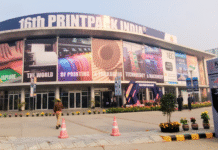
WAN-IFRA’s Chartbeat has issued an analysis of its audience engagement data and from around the world for the second quarter of 2020 in an article by Nick Lioudis. It’s best to read Lioudis’ report, which you can get by clicking here, but as an intro, I will attempt to summarize some of the South Asia highlights.
Lioudis states, “A significant rise in reader engagement driven by the global pandemic was front and center in our latest analysis for the quarter ending June 30. Across the globe, we saw increases in Engaged Time and referrals, yet the challenge for publishers was (and remains) translating those increased site visits into returning, loyal readers.”
If I can summarize his summary, reader engagement time varies from 36 seconds to 29 seconds. Latin America is on top at an average 36.3 seconds of audience engagement, and Central and Eastern Europe readers are at the bottom at 29 seconds. For Latin America, it’s consecutive quarters at the top. Southeast Asia is in the middle of the pack at 32 seconds tied with North America and Southern Europe.
Social referrals in Southeast Asia still far above rest
Lioudis writes, “Publishers hoping to get the attention of audiences in Southeast Asia may consider strategies around social media platforms, which referred 32% of traffic in the past quarter. Combined with their 76% of traffic referred from mobile devices, the data suggests there could be a compelling reason to experiment with audience engagement on mobile-first social platforms.”
Southeast Asia presents the dilemma of attracting readers through social media and getting them to come back, spend more time on the sites, commit to the site, and ultimately to present opportunities to turn into reader revenue. Audience loyalty also seems down in Asia in comparison to Europe.
Impact of coronavirus
Last quarter’s data summary was described as the ‘calm before the storm.’ Lioudis says this is still the situation with traffic and engagement continuing to be up at unprecedented levels. He concludes, “However, it will likely take several quarters to have a clearer idea of whether this vast increase in audience engagement can translate to greater loyalty, and ultimately, reader revenue opportunities.”












